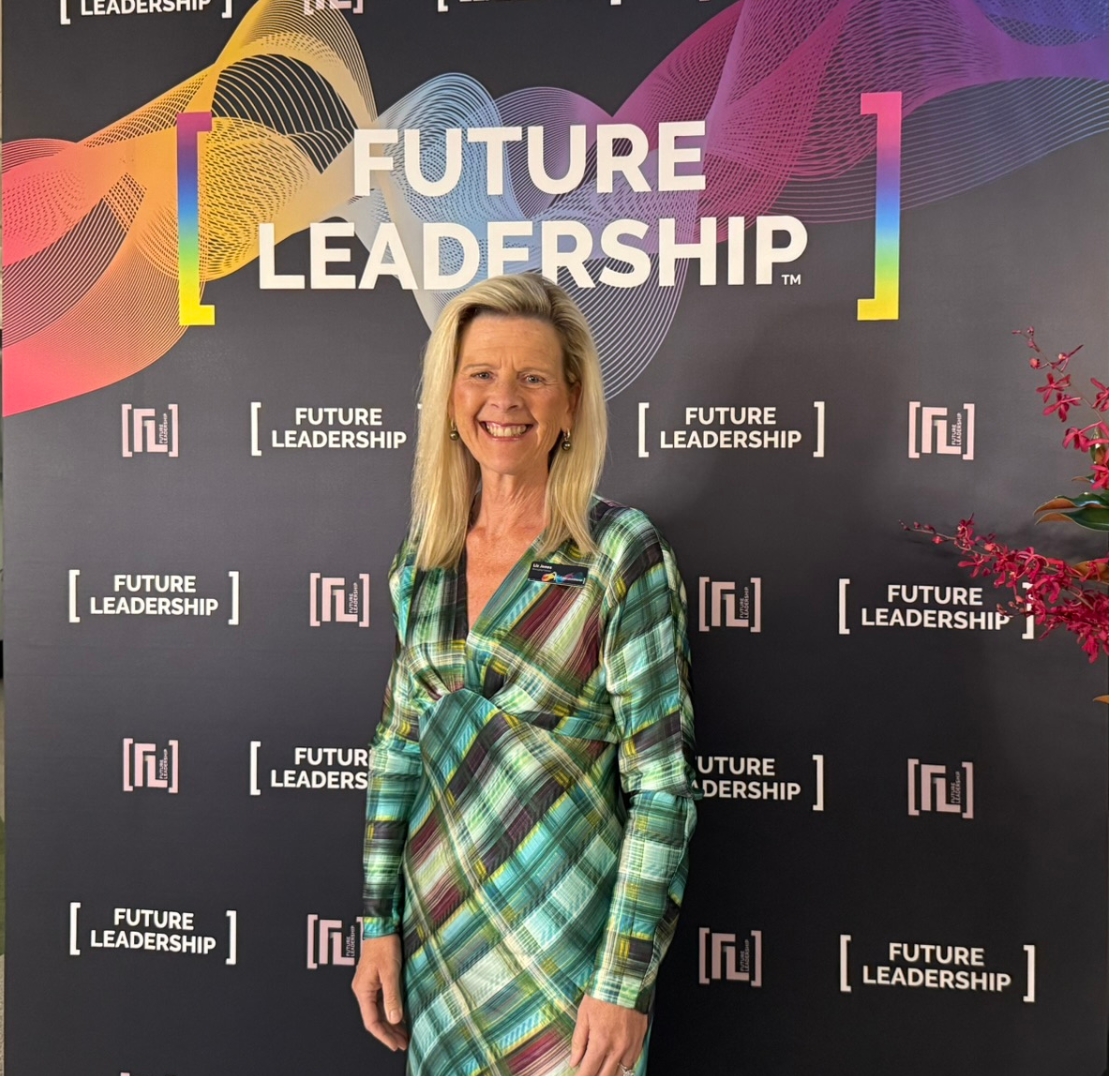
Be 10% Braver: The Call to Courage for the Next Generation of Women in Leadership
By Liz Jones, Managing Partner, Future Leadership Let me start with a confession: I never set out to become an expert in leadership.
But after more than 25 years of sitting across the table from extraordinary leaders (and a few not-so-extraordinary ones), I’ve come to realise that the most important work we do at Future Leadership isn’t just filling jobs, it’s helping people with leadership potential back themselves. Especially women. Especially in education. And especially now.
We’re living in a world that’s throwing curveballs like never before. AI, climate change, social disruption, mental health, neurodiversity, this generation of students (and educators) are coming of age in times that demand not just smarts, but adaptability, resilience, and vision.
So the question for all of us, particularly those who shape our schools and learning environments, is this:
How do we make sure the next generation of women leaders are brave enough to back themselves, and bold enough to build futures they can’t yet imagine?
It starts with us.
What I Look for (and Don’t) in Education Leaders
This July, I had the pleasure of speaking at the #WomenEd Australia Webinar. The event was titled “10% Braver – Planning and Applying for Leadership“. It was a riveting conversation with Michelle Dennis, Head of Digital at Haileybury, and Lauren Sayer, Director at Victorian Curriculum and Assessment Authority and Melbourne Girls Grammar. Here’s something I said at the event, and I say often, because it still surprises people: your CV is not a marketing brochure.
It’s not about puffery or perfect phrasing. It’s about impact. What did you inherit? What did you do? What changed?
When I’m reviewing candidates for senior education leadership roles, I’m not just ticking boxes for years of experience or formal quals (though yes, they still matter). I’m looking for future-ready capability. Things like:
- Adaptability: Can you lead through ambiguous and complex times?
- Capability growth: Do you understand how to build capacity in others?
- Emotional Awareness: Have you created environments where people feel safe to try, fail, and try again?
And here’s the clincher: Have you evolved with the times, or are you clinging to yesterday’s definitions of leadership?
Because schools don’t want status quo. They want transformation. They want leaders who’ve figured out how to integrate AI thoughtfully, engage with cultural complexity, prioritise wellbeing, and create climate-conscious strategies with students at the centre.
CVs and Cover Letters: The No-Fluff Version
A little practical advice (because we all love a tip we can use right away): if you’re applying for a leadership role, read the Candidate Information Pack properly.
I mean really read it. The capabilities listed in there? That’s what the interview is going to be based on. Don’t write a generic cover letter. It’s not 2003. Instead, connect emotionally to the organisation. Reference their values. Mention a school leader you admire. Show me that you’ve done your homework and you give a damn.
And for the love of all things good in education, don’t regurgitate your CV in your interview. Tell me a story. Use the STAR method: Situation, Task, Action, Result and be reflective and ensure you make it relevant to the client. Nail 10 great, scalable stories and be able to deliver them with clarity and energy.
Because when you walk into that interview, the panel already thinks you can do the job. What they want to know now is: How will you do it? And will you do it in a way that fits who we are and where we’re going?
The Spiral Career and the Power of Saying “Yes”
We need to shift our mindset about what a leadership journey looks like.
It’s not always a straight line up. Sometimes it’s a spiral. Sometimes it loops sideways through a secondment or a role in a different sector. That doesn’t mean you’re off track, it means you’re building breadth.
I’ll never forget one panellist, Lauren Sayer, who shared how her first leadership opportunity came through a four-week secondment on interactive whiteboards. Unpaid. Unfamiliar. But she said yes. And that tiny step became the foundation for everything that followed.
We need to teach our emerging women that leadership doesn’t require perfection or readiness. It requires willingness.
Getting Over the “Not Ready Yet” Syndrome
Let’s be honest, we’ve all heard it:
“I don’t tick all the boxes.”
“I’ve never held a formal leadership title.”
“I’m not sure I’m ready.”
Here’s the truth: no one is ever “ready” in the way they think they need to be.
What matters is whether you’ve been developing leadership behaviours before you hold the title. Have you mentored others? Piloted an initiative? Led a tricky conversation? Sat in discomfort and worked through it with integrity?
You don’t need the crown to lead. You need courage.
Interview Prep: The Bit No One Practices Enough
Too many candidates stumble at the final hurdle because they haven’t prepared properly.
Here’s my advice:
- Practice your stories like you’re prepping for a role in a movie. Know your data. Your timelines. Your budget figures.
- Don’t wing it. Record yourself. Watch it back. Cringe a little. Then get better.
- Get comfortable asking bold questions at the end of an interview. Not “What’s the culture like?” (snooze). Ask, “What are the biggest strategic risks you’re facing, and how could this role help address them?” Boom. You’ve just reframed yourself as a partner in progress, not just a candidate.
Capability Over Compliance
Schools used to ask: Can you manage compliance? Keep the trains running?
Now they’re asking: Can you lead a transformation? Navigate complexity? Build a team that thrives through disruption?
If you’re still preparing for yesterday’s interview questions, you’re going to miss tomorrow’s opportunities.
So here’s what you can do right now:
- Engage with future thinking. Read about how AI is reshaping assessment. Learn how climate change is impacting school infrastructure.
- Build cultural competence. Not just in terms of DEI policies, but real-world, community-led understanding.
- Understand neurodiversity, not just as a challenge to accommodate, but as a strength to amplify.
And if you’re serious about stepping up, consider using our Future Leadership Capability Framework (FLCF). It’s a diagnostic tool we use with leadership teams to pinpoint capability gaps and map future readiness. Reach out if you want a link to the interactive version, we use it every day to support leaders just like you.
Onboarding and the First 100 Days
So you’ve landed the gig, big congrats!
Now what?
Forget the old-school 100-day listening tour. The bar is higher now.
Leaders who make a mark early:
- Establish feedback loops (yes, include student voice!).
- Use diagnostics to fast-track understanding of team dynamics.
- Honour the existing culture and begin building adaptive capacity.
And please, be kind to yourself. Impact is expected quickly, but perfection isn’t. Show up ready to learn, and the credibility will come.
The Gendered Double-Bind (and What to Do About It)
Let’s talk straight: women in education leadership still walk a tightrope.
Too soft? You’re seen as lacking gravitas. Too assertive? You’re suddenly “intimidating”. We’ve all been there.
Here’s my advice:
- Own your collaborative, emotionally intelligent, systems-thinking leadership style. That’s not a liability, it’s exactly what our schools need.
- Don’t water yourself down to fit a broken mould. Break the mould.
You don’t need to mimic masculine leadership to be effective. You need to model courageous, human-centred leadership. And that’s often a space women occupy brilliantly.
For the Educators Shaping Tomorrow’s Women
This article isn’t just for the aspiring leaders in the room. It’s for the education leaders already at the helm, those shaping the pathways for the next generation of brave women.
Here’s your challenge:
- Say yes to mentoring. One conversation can shift a career.
- Create leadership opportunities before titles, invite your emerging leaders into decision-making spaces.
- Celebrate spiral careers. Value what people learn outside the box.
- Make space for reflection. Ask your team what they’re learning, not just what they’re delivering.
And most importantly: tell the truth about your own journey. The messy bits. The pivots. The doubts. That’s what gives other women permission to dream, and permission to dare.
Final Thought: Bravery Begets Bravery
We tell our girls they can be anything. But unless we model bravery ourselves, unless we show what it means to put our hands up before we feel ready, to ask the hard questions, to speak when it’s easier to stay quiet—we’re sending mixed signals.
So let’s be 10% braver. Not just in how we lead, but in how we lift.
Let’s raise our voices, open doors, and pave the way for a future where no young woman doubts she belongs at the table, or at the front of the room.
Because if we don’t back them, who will?
About the Author:
Liz Jones is Managing Partner at Future Leadership. With over two decades of experience placing senior leaders across the education sector, she’s a straight-talking champion for capability over credentials, people over performance, and brave women backing themselves. She leads Future Leadership’s national education practice and is a firm believer that a 10% braver mindset can change everything.


